#Jan III Sobieski
Text
QUARTER-FINAL SIDE 1

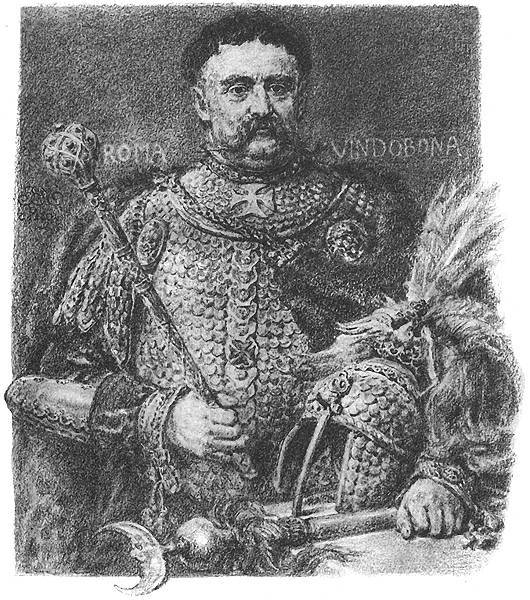
Poniatowski previously won against August II Mocny with 73.2% of the votes and against Henryk Walezy (de Valois) with 65.2%
Jan III Sobieski previously sweeped against Bolesław Krzywousty with 77.7% and won a narrow victory (52.4%) over Bolesław Chrobry
50 notes
·
View notes
Text

Battle of Vienna, art by Gonzales Franciscus Casteels
According to Wikipedia:
[On 12 September 1683] 18,000 horsemen charged down the hills, the largest cavalry charge in history. [The Polish king Jan III.] Sobieski led the charge at the head of 3,000 Polish heavy lancers, the 'Winged Hussars'. [...] The forces of the Ottoman Empire and its vassal states were commanded by Grand Vizier Merzifonlu Kara Mustafa Pasha. The Ottoman army numbered approximately 90,000 to 300,000 men.
2 notes
·
View notes
Text
Dał nam przykład król Sobieski jak zwyciężać mamy 🇵🇱 miłego Dnia Niepodległości, kochani! :)
#poland independence day#polish independence day#poland#polska#po polsku#polski blog#polish#polski tumblr#cytaty po polsku#polskie cytaty#independence day#polishcore#polandcore#polish wave#jan sobieski#król jan sobieski#jan iii sobieski#11 listopada#święto niepodległości
23 notes
·
View notes
Text
Akcja "Skumbrie w tomacie", Forum Mirriel

3 notes
·
View notes
Video
Perfect. Jan III Sobieski. Vienna 1683 Battle Mix DJ Francuz
#youtube#perfect jan3 vienna 1683 battle polish rock polskamuzyka Król Jan III Sobieski 1683 King John III Sobieski In 1683 as Jan III Sobi
0 notes
Text
Wprowadzenie
W ciągu dziejów fryzury męskie władców często odzwierciedlały ich władzę i status społeczny. Od wyszukanych peruk po skomplikowane warkocze, fryzury europejskich monarchów w XIV do XIX wieku nie były wyjątkiem. Fryzury te nie tylko były symbolem ich władzy, ale także sposobem na okazanie swojego bogactwa i statusu społecznego. Niektóre z najbardziej charakterystycznych fryzur z tego okresu to proszkowe peruki francuskiego dworu, płynące włosy z ery romantyzmu i schludne fryzury z przedziałkiem z epoki wiktoriańskiej. Przyjrzyjmy się bliżej fascynującym i często ekscentrycznym fryzurami europejskich władców od XIV do XIX wieku.
Einfluss religii i kultury na fryzury męskie
Fryzury męskie w Europie w XIV wieku były zdominowane przez wpływy religijne i kulturowe. Włosy były często układane w proste, mocno przyklejone kaski. W XIV wieku popularne było noszenie długich włosów, które były opuszczane na plecy lub związane w kucyk. Jednakże, w XVI wieku, fryzury męskie zaczęły zmieniać się pod wpływem renesansu i wzorów z antyku. Włosy były układane w skomplikowane upięcia, często z warkoczami, i często ozdabiane perłami lub innymi ozdobami.
W XVII wieku fryzury męskie stały się jeszcze bardziej skomplikowane i wyszukane, a peruki stały się powszechne. W XVIII wieku peruki zaczęły być coraz bardziej popularne, szczególnie we Francji i Anglii. Włosy były często pudrowane, aby uzyskać biały kolor, a peruki były często ozdabiane kwiatami, kokardami lub innymi ozdobami.
W XIX wieku fryzury męskie zaczęły się upraszczać, a peruki zaczęły wychodzić z mody. Mężczyźni zaczęli nosić włosy krótkie lub średniej długości, często z przedziałkiem pośrodku. Fryzury były schludne i proste, a włosy często były przyklejane do głowy przy pomocy specjalnych preparatów.
Fryzury renesansowe
Włosy w epoce renesansu były układane w skomplikowane upięcia, często z warkoczami i ozdobami. Fryzury były inspirowane wzorami z antyku, a mężczyźni zaczęli nosić długie, falujące włosy. Peruki stały się również popularne w epoce renesansu, szczególnie wśród władców i arystokracji.
Włosy były często pudrowane, aby uzyskać biały kolor, a peruki były ozdabiane kokardami, perłami i innymi ozdobami. Fryzury renesansowe były bardzo skomplikowane i wymagały wielu godzin pracy, aby je ułożyć.
Włosy były często układane w kaski lub warkocze, a mężczyźni nosili również peruki. W XVIII wieku peruki stały się coraz bardziej skomplikowane, a pudrowanie włosów stało się popularne.
Fryzury epoki baroku
Fryzury męskie w epoce baroku były bardzo skomplikowane i ozdobione perukami i kwiatami. Włosy były często pudrowane, aby uzyskać biały kolor, i układane w skomplikowane upięcia. Fryzury były często bardzo ciężkie i wymagały specjalnych drutów, aby utrzymać je na głowie.
Włosy były często układane w kaski lub warkocze, a mężczyźni nosili również peruki. W XVIII wieku peruki stały się coraz bardziej skomplikowane, a pudrowanie włosów stało się popularne.
W epoce baroku mężczyźni zaczęli nosić długie, falujące włosy, często związane w kucyk. Peruki stały się również popularne, szczególnie wśród władców i arystokracji. Włosy były pudrowane i często ozdabiane kwiatami, kokardami i innymi ozdobami.
Fryzury epoki rokoka
Fryzury męskie w epoce rokoka były bardzo eleganckie i skomplikowane. Włosy były często pudrowane, aby uzyskać biały kolor, i układane w skomplikowane upięcia. Fryzury były ozdobione perłami, kwiatami i innymi ozdobami.
Włosy były często układane w kaski lub warkocze, a mężczyźni nosili również peruki. W XVIII wieku peruki stały się coraz bardziej skomplikowane, a pudrowanie włosów stało się popularne.
W epoce rokoka mężczyźni zaczęli nosić długie, falujące włosy, często związane w kucyk. Peruki stały się również popularne, szczególnie wśród władców i arystokracji. Włosy były pudrowane i często ozdabiane kwiatami, kokardami i innymi ozdobami.
Fryzury neoklasyczne z końca XVIII wieku
W epoce neoklasycznej mężczyźni zaczęli nosić proste, schludne fryzury. Włosy były często przyklejane do głowy przy pomocy specjalnych preparatów, a przedziałek pośrodku był bardzo popularny. Peruki wychodziły z mody, a pudrowanie włosów stało się coraz rzadsze.
Fryzury męskie w epoce neoklasycznej były bardzo proste i schludne. Włosy były często przyklejane do głowy przy pomocy specjalnych preparatów, a przedziałek pośrodku był bardzo popularny.
W epoce neoklasycznej mężczyźni zaczęli nosić długie, falujące włosy, często związane w kucyk. Peruki stały się również popularne, szczególnie wśród władców i arystokracji. Włosy były pudrowane i często ozdabiane kwiatami, kokardami i innymi ozdobami.
Fryzury romantyczne
W epoce romantycznej mężczyźni zaczęli nosić długie, falujące włosy. Fryzury były proste i naturalne, a peruki wychodziły z mody. Włosy były często przyciemniane, aby uzyskać bardziej naturalny kolor.
W epoce romantycznej mężczyźni zaczęli nosić długie, falujące włosy. Fryzury były proste i naturalne, a peruki wychodziły z mody. Włosy były często przyciemniane, aby uzyskać bardziej naturalny kolor.
Fryzury męskie w epoce romantycznej były bardzo proste i naturalne. Włosy były noszone długie i falujące, często związane w kucyk. Peruki wychodziły z mody, a warkocze były rzadziej używane.
Fryzury wiktoriańskie
W epoce wiktoriańskiej mężczyźni zaczęli nosić proste, schludne fryzury. Włosy były często przyklejane do głowy przy pomocy specjalnych preparatów, a przedziałek pośrodku był bardzo popularny. Fryzury były bardzo eleganckie i schludne, a peruki wychodziły z mody.
Włosy były często noszone krótkie lub średniej długości, a przedziałek pośrodku był bardzo popularny. Fryzury były bardzo schludne i proste, a włosy często były przyklejane do głowy przy pomocy specjalnych preparatów.
Wpływ polityczny i społeczny na fryzury męskie
Fryzury męskie w Europie w XIV do XIX wieku często były narzędziem politycznym i społecznym. Władców i arystokrację często zobowiązywano do noszenia określonych fryzur, aby okazać lojalność wobec króla lub rządu. Fryzury były również sposobem na okazanie swojego statusu społecznego i bogactwa.
W XVIII wieku peruki stały się bardzo popularne, szczególnie we Francji i Anglii. Włosy były często pudrowane, aby uzyskać biały kolor, a peruki były często ozdabiane kwiatami, kokardami lub innymi ozdobami.
W XIX wieku fryzury męskie zaczęły się upraszczać, a peruki zaczęły wychodzić z mody. Mężczyźni zaczęli nosić włosy krótkie lub średniej długości, często z przedziałkiem pośrodku. Fryzury były schludne i proste, a włosy często były przyklejane do głowy przy pomocy specjalnych preparatów.
Dziedzictwo fryzur męskich z XIV do XIX wieku
Fryzury męskie z XIV do XIX wieku pozostawiły wiele śladów w dzisiejszej modzie i kulturze. Niektóre fryzury, takie jak przedziałek pośrodku i proste, schludne fryzury, są wciąż popularne, szczególnie wśród mężczyzn. Mężczyźni nadal noszą długie włosy i warkocze, a peruki są używane w teatrze i filmie.
Fryzury męskie z XIV do XIX wieku były często skomplikowane i wymagały wielu godzin pracy, aby je ułożyć. Włosy były pudrowane i często ozdabiane kwiatami, kokardami i innymi ozdobami. Fryzury te były nie tylko symbolem władzy i statusu społecznego, ale także wyrazem sztuki i kultury.
Podsumowanie
Fryzury męskie europejskich władców z XIV do XIX wieku były nie tylko symbolem władzy i statusu społecznego, ale także wyrazem sztuki i kultury. Włosy były pudrowane, układane w skomplikowane upięcia, a peruki były ozdabiane kwiatami, kokardami i innymi ozdobami. Fryzury te pozostawiły wiele śladów w dzisiejszej modzie i kulturze, i nadal inspirują projektantów i artystów na całym świecie.
#fryzura królów europejskich#KrólPrusCesarzNiemiecWilhelmIIHohenzollernfryzura#Leopoldzie II#królu Belgów fryzurą i brodą#Król Jan III Sobieski - jaką miał fryzurę#Konstytucja 3 Maja#Stanisław August Poniatowski i jego fryzura#Jaką fryzurę miał Władysław Jagiełło podczas bitwy pod Grunwaldem w 1410 roku#Louis Philippe I - Władcza Fryzura i Wybuch Rewolucji Lipcowej#Fryzura Króla Francji Ludwika XIV#Alfonso XII - Twórca pokoju i mężczyzna ze stylowymi bokobrodami
1 note
·
View note
Text
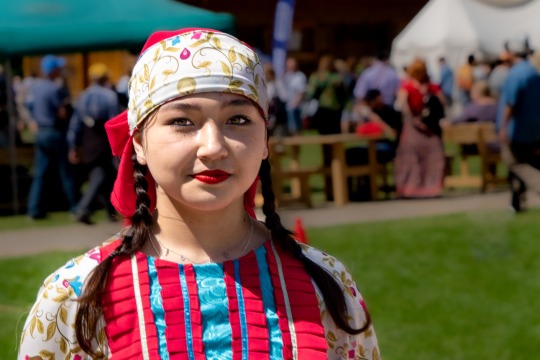



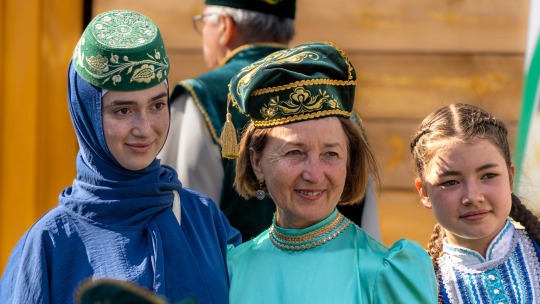
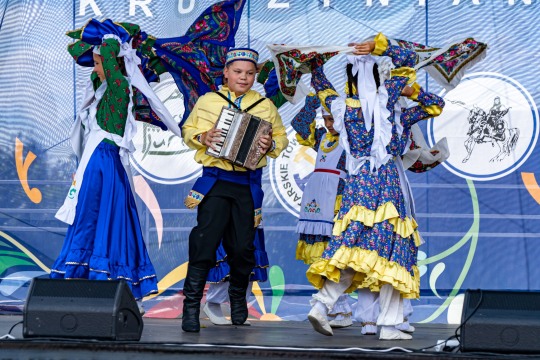
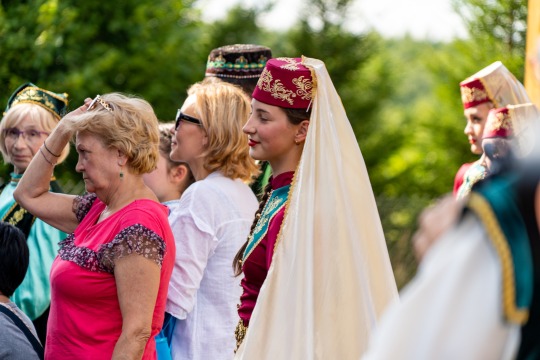
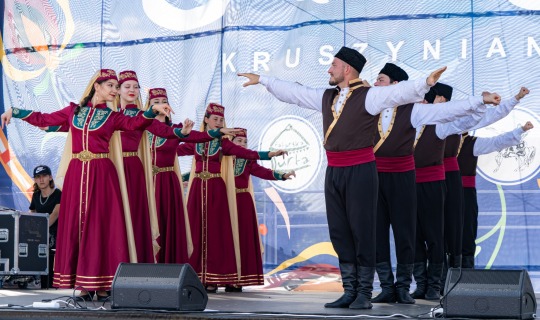
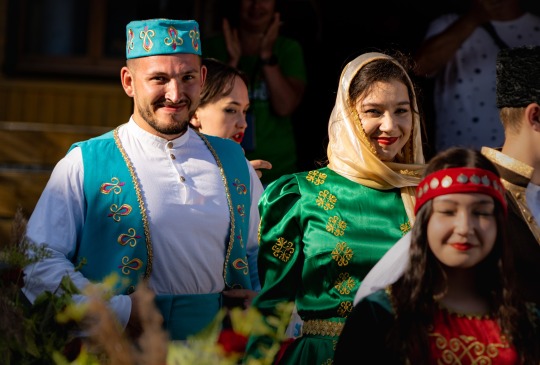
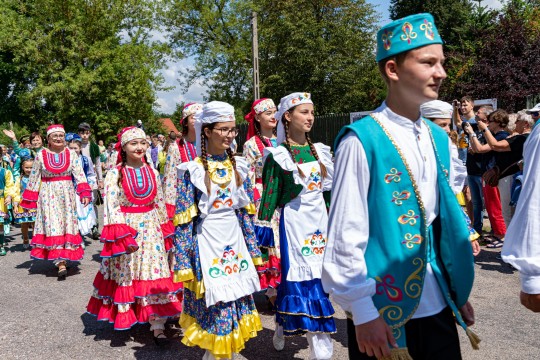
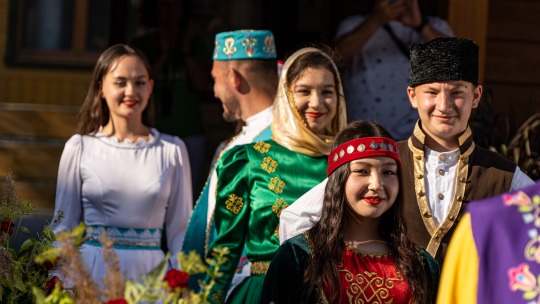
Poland's Muslim Lipka Tatars
Lipka Tatars are Poland's only remaining Indigenous Islamic group. Many of the Polish Tatars belonged to the Polish nobility historically and through out history have been one of the most loyal groups to the Polish state; also having had an influence on the general Polish culture.
Noted for their skills in archery and horse riding, they have been viewed as some of Poland's greatest warriors in the past. Their combat was essential in Poland's victory over the Ottoman Empire during the Battle of Vienna. This fact is contrary to recent western nationalist propaganda, stating that the war was a battle between Christendom and the Islamic world, rather than a war of imperialism. After the war King Jan Sobieski III granted the Lipka Tatars large pieces of land in the Podlasie region of Eastern Poland.
Their origins are in predominately male Crimean Tatars and other settlers from the Golden Horde, who relied on intermarriage with Christian women, leading to early partial assimilation and adoption of Slavic languages. However, they were able to keep their identity and parts of their culture through their ties to Islam. Regardless, over the centuries more and more Tatars were absorbed into the Polish-Lithuanian Common wealth's Catholic and Orthodox populations, with estimates in the 18th century stating that up to 25% of Muslims converted to Christianity- partially motivated by violent peasant drawback due to the privileges bestowed onto them. Eventually this absorption reached its height during the inter-war and post-World War II period of Poland, in part due to assimilative policies. These days most Lipka Tatar descedants simply identify as ethnic Poles, with many Poles not aware of their ancestry. A prominent example of this is Polish-American personality Martha Stewart who only recently discovered that she is of partial Lipka Tatar ancestry, after partaking in a television program dedicated to geneaology.
148 notes
·
View notes
Text
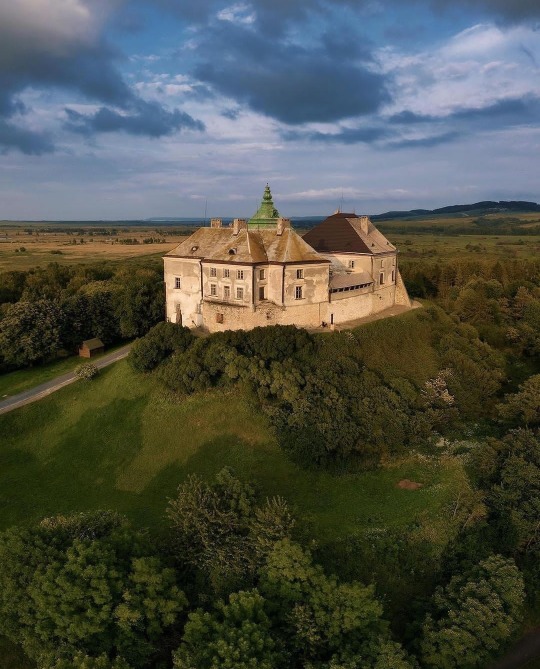

Olesko castle, Ukraine. Birthplace of Jan III Sobieski, the hero of battle of Vienna.
104 notes
·
View notes
Text
Sadly, a majority of Americans are almost completely ignorant about Eastern Europe. They probably don't know the difference between Budapest and Bucharest. (Spoiler: They are capitals of two non-Slavic countries in the region)
When Russia illegally annexed Crimea in 2014, Americans were surveyed on the location of Ukraine on an unlabeled map. Just 16% got it right. This map shows one dot for each response.

Yes, a couple of people thought Ukraine was in Memphis. Not sure what's up with those many folks who thought it is in Greenland. Maybe that's why Trump tried to buy it from Denmark.
In history in US classrooms almost nothing is mentioned about Eastern Europe that happened before the 20th century. This short list of items is typical.
A few (usually exotic) personalities like Ivan the Terrible, Vlad the Impaler, and Peter the Great.
Copernicus (real name: Mikołaj Kopernik) sorting out the Solar System. And that is actually more science than history.
The Siege of Vienna (1683). Vienna is not exactly in Eastern Europe but the siege was lifted by Polish King Jan III Sobieski.
A passing reference to Tsar Aleksandr II freeing the serfs – but only because it happened within two years of the Emancipation Proclamation.
So if you know almost nothing about the location and history of a country, you certainly won't understand its importance to international peace and security.
And that's the case with Ukraine which Putin sees simply as a piece in his country collection in his effort to restore the decrepit Soviet Union in all but name.
As Brendan Simms writes in his linked article up top...
It is worth reminding ourselves what is at stake. If Putin is not defeated and forced to withdraw from Ukraine, this will endanger much more than just the viability of that country. It will enable the Russians to reconstitute their forces facing the Baltic states and Finland, constituting a threat that we will have to face without support from Kyiv. The Ukrainians are thus fighting not only for their own sovereignty but our security as well. Their army is one of the best guarantors we have against future Russian aggression. All they ask is our help. We should give them what they need.
About those so called "red lines" we hear about from tankies and Trumpsters – those lines apparently don't really exist.
Robyn Dixon and Catherine Belton at the Washington Post write:
Ukraine’s resistance to Russia’s invasion keeps crossing President Vladimir Putin’s red lines.
Kyiv’s lightning incursion into Kursk in western Russia this month slashed through the reddest line of all — a direct ground assault on Russia — yet Putin’s response has so far been strikingly passive and muted, in sharp contrast to his rhetoric earlier in the war.
On day one of the invasion in February 2022, Putin warned that any country that stood in Russia’s way would face consequences “such as you have never seen in your entire history,” a threat that seemed directed at countries that might arm Ukraine.
If Russia’s territorial integrity were threatened, “we will certainly use all the means at our disposal to protect Russia and our people. It’s not a bluff,” he said a few months later in September. “The citizens of Russia can be sure that the territorial integrity of our Motherland, our independence and freedom will be ensured — I emphasize this again — with all the means at our disposal,” making a clear reference to Russia’s nuclear weapons.
In other words, Putin has been bullshitting.
Ukraine’s Kursk incursion “proved the Russians are bluffing,” said Oleksandr Danylyuk, a former Ukrainian intelligence and defense official, now an associate fellow with the Royal United Services Institute, a think tank in London. “It shuts down all of the voices of the pseudo experts … the anti-escalation guys.”
Vladimir Putin can bluff only so much before people see that he's full of shit.💩 We're already past that point. His imperialist fantasies make him think that he's back in the Soviet Union and all he has to do is say something bellicose to get whatever he wants.
There are now Ukrainian troops on Russia's soil and over 133,000 refugees fanning out from the area telling other Russians of what's really going on near the border without censorship from Russian state media. The weaker Putin looks inside Russia, the sooner his invasion will end.
As I've said before, give Ukraine whatever weapons it wants – except nukes. Ukraine is doing NATO an enormous favor by keeping Putin at bay.
#invasion of ukraine#eastern europe#ukraine#kursk#former soviet union#vladimir putin#russian imperialism#russia's war of aggression#red lines#bullshit#oleksandr danylyuk#россия#курская область#агрессивная война россии#бывший ссср#владимир путин#путин хуйло#долой путина#россия проигрывает войну#путин – это лжедмитрий iv а не пётр великий#руки прочь от украины!#геть з україни#вторгнення оркостану в україну#деокупація#курськ#олександр данилюк#слава україні!#героям слава!
36 notes
·
View notes
Note
shuffle your favorite playlist and post the first five songs that come up. then copy/paste this ask to your favorite mutuals <3
its your turn now 🫵
All-in-one playlist cause i don't have a favourite one:
- "Sera was never" from Dragon Age: Inquisition soundtrack
- "Build that wall" from Bastion soundtrack
- "Revolution" by The Score
- "Tylko we Lwowie" by Mieczysław Fogg
- "Triumphal March of Jan III Sobieski" by Polish Eagle (i think)
3 notes
·
View notes
Text

PL:
Meczet tatarski, Kruszyniany, Polska
Wieś Kruszyniany w XVII wieku została nadana przez króla Jana III Sobieskiego Tatarom, którzy wzięli udział w wojnie z Turkami stając po stronie Rzeczypospolitej Obojga Narodów. We wsi osiedliło się 45 tatarskich rodzin, w tym płk Samuel Murza Krzeczowski, który uratował życie królowi w bitwie pod Parkanami (1683).
Społeczność tatarska po osiedleniu się zbudowała meczet, który po raz pierwszy wspomniany jest w dokumentach z 1717. Obecny został zbudowany prawdopodobnie w drugiej połowie XVIII wieku lub w pierwszej połowie XIX wieku (dokładna data budowy nie jest znana), na miejscu dawniejszego meczetu.
W Kruszynianach znajduje się także mizar, czyli muzułmański cmentarz. Znaleźć tam można nagrobki mające nawet kilkaset lat (najstarszy pochodzi z 1699 roku).
Wieś jest wielokulturowa, zamieszkują ją także wyznawcy prawosławia i katolicy. Żartują, że mają 3 niedziele: "W piątek zaczynają świętować muzułmanie, w sobotę żydzi, a w niedzielę katolicy i prawosławni… Jest dużo świąt i nie ma kiedy pracować, bo z szacunku do sąsiada wypada świętować razem z nim." ;)
EN:
Tatar mosque, Kruszyniany, Poland
In the 17th century, the village of Kruszyniany was given by King Jan III Sobieski to the Tatars, who took part in the war against the Turks, siding with the Polish-Lithuanian Commonwealth. 45 Tatar families settled in the village, including Colonel Samuel Murza Krzeczowski, who saved the king's life in the Battle of Parkany (1683).
After settling, the Tatar community built a mosque, which is first mentioned in documents from 1717. The current one was probably built in the second half of the 18th century or the first half of the 19th century (the exact date of construction is unknown), on the site of an earlier mosque.
There is also a mizar, i.e. a Muslim cemetery, in Kruszyniany. You can find there tombstones that are even several hundred years old (the oldest dates back to 1699).
The village is also inhabited by Orthodox believers and Catholics. They joke that they have three Sundays: "Muslims start celebrating on Friday, Jews on Saturday, and Catholics and Orthodox on Sunday… There are many holidays and there is no time to work, because out of respect for your neighbor, you should celebrate with him." ;)
#kruszyniany#polska#poland#meczet#mosque#tatarzy#tatars#architektura#architecture#sacralarchitecture#architekturasakralna#woodenarchitecture#architekturadrewniana#polscytatarzy#polishtatars
4 notes
·
View notes
Text
ROUND 3 SIDE 1
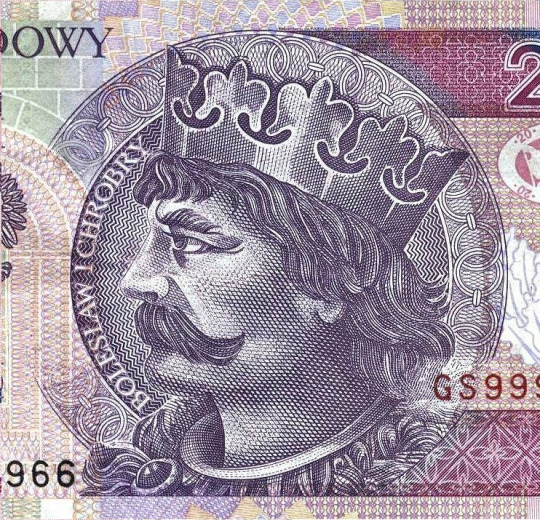
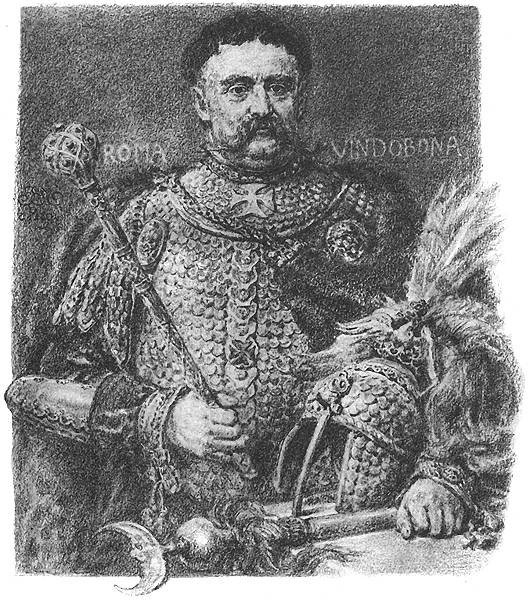
some of our best military leaders for certain! but kingship is more than just warfare - read about these men handled diplomacy here and here!
38 notes
·
View notes
Note
what historical blorbos are we talking. from how long ago they're supposed to be is like 1920s good enough? what are yours?
My main historical blorbo is Tadeusz Kościuszko (1746-1817), then there's king Jan III Sobieski (1629-1696), a secondary blorbo, but I treat him kinda like a silly uncle (and it started from a joke). I'm also a casual Anna Pustowójtówna (1838-1881) enjoyer, so it's all over the place when it comes to the eras they come from. I must add, I don't idolise them, especially the first two, they had flaws. When it comes to Kościuszko I'm absolutely obsessed and read about him every day. It started from another friend who was researching him, and I got interested too. I feel like some publications portray him as an absolute angel with no flaws, which, like, no, not really, but nobody is flawless. I just kinda vibe with the guy, bro was anti-racist, anti-monarchy and generally tried to help people in need, so Jewish people, peasants, Black people, women etc. Also he liked to draw (and I like to draw too), was very socially awkward and then had what seemed like a charming villain era after getting emotionally hurt for a millionth time (and then got awkward again). The problem with him is, we know a lot, but not everything. There's a lot of speculating. Bro had some weak moments, but I feel like I wouldn't do 1/10 of what he did if I was as traumatised and paranoid as he often was. He seemed like a very delicate person actually.
When it comes to the king guy, it started from a painting in the museum I work in. Bro had a typical nobleman haircut (something like an undercut but baroque era) and a moustache, like most Polish men at the time. During a museum tour I called him an "uncle looking guy". Then my coworkers decided to call me "uwuja" (uwu uncle) and that's how it started. Also he probably made a bouquet of potato flowers for his wive.
The third blorbo is a fucking badass and I love her. She used a nickname "Michał Smok'' (Michael Dragon) to fight with the soldiers during the 1863 January Uprising in occupied Poland. Girl was a beast and I admire her greatly.
Also every time I said "Poland'' I meant Polish-Lithuanian Commonwealth.
Also #2. My coworkers have historical blorbos who were born in the 1950s. Every blorbo is good. (except like Nazis. Or literal Stalin and shit like that)
Also #3. My bestie made me a Kosciuszko necklace using an old coin, hope you like it

#asks#history#another blorbo WAS Adam Mickiewicz but as one wise tumblr user said#the more u learn aboot him the more he seems to be an SCP
2 notes
·
View notes
Text

Artist (company): unknown - author (malarz dworski-naśladowca Daniela Schultza)
Title (name): Portrait of the Sons of John III Sobieski: Aleksander (1677–1714),
Konstanty (1680–1726) and Jan (1683–1685)
National Museum Krakow
4 notes
·
View notes
Video
youtube
Jan III Sobieski cz. I | Życie i Podboje
0 notes
Text
Retter des Abendlandes – Teil III: Der „Herzog ohne Herzogtum“, Karl von Lothringen
PI schreibt: »Von SELBERDENKER | Der zweite Teil der dreiteiligen PI-NEWS-Serie „Retter des Abendlandes“ endete mit der Aussage, dass König Jan III. Sobieski im Bewusstsein gemeinsamer christlicher Identität ein Friedensbündnis nationalen Interessen vorgezogen hat. Das ist für die damalige Zeit eher unüblich. Das beste Gegenbeispiel dazu ist Sonnenkönig Ludwig XIV., der damals uneingeschränkt Frankreich beherrschte. Der „Sonnenkönig“ […] http://dlvr.it/T9V15Q «
0 notes